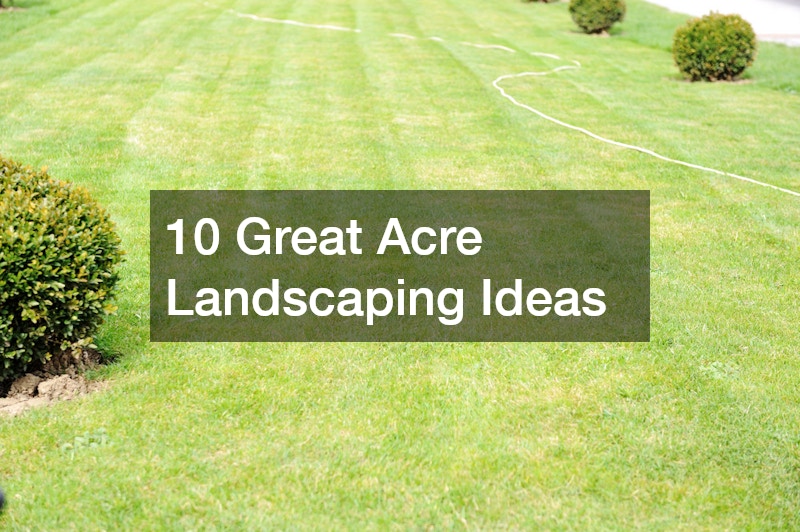Deciding You Want to Renovate Your Home’s Exterior
Transforming outdoor spaces into functional, beautiful environments requires more than just a few plants and decorative features—it demands thoughtful design, structural integrity, and a deep understanding of land usage. Homeowners and property developers alike are discovering the value of investing in well-planned landscaping that goes beyond surface aesthetics. A structural landscaper brings a unique skill set to the table, combining construction knowledge with a keen eye for outdoor design. These professionals help turn outdoor areas into extensions of the home, integrating both hardscaping and softscaping elements to achieve balance, durability, and style.
From retaining walls to outdoor kitchens, and from water features to privacy fences, the scope of work a structural landscaper can cover is vast. Their ability to blend structural components with natural surroundings creates cohesive environments that enhance property value and lifestyle quality. Whether your goal is to add functional entertaining areas or to resolve issues with drainage and grading, working with a structural landscaper ensures that your vision is executed with both creativity and practicality. This blog explores the key areas where structural landscaping can make the most impact—and how partnering with the right professional can transform your outdoor space into something extraordinary.

Planning Your Outdoor Vision with Purpose
Every great landscape transformation begins with a clear and intentional plan. Before breaking ground or sourcing materials, it’s essential to develop a comprehensive vision that aligns with both lifestyle needs and the site’s existing features. A structural landscaper helps bridge the gap between inspiration and execution by assessing the natural terrain, climate conditions, and spatial limitations of a property. This kind of planning ensures that every element—whether it’s a patio, pathway, or retaining wall—works together cohesively and adds functional value to the outdoor space.
When collaborating with a structural landscaper, one of the first steps often involves reviewing project goals alongside a qualified building company. These early-stage discussions help streamline design possibilities and ensure feasibility from a construction perspective. By integrating structural insight into the initial planning process, homeowners can avoid costly revisions and delays. A building company working alongside a structural landscaper brings the technical know-how to reinforce foundations, support drainage systems, and ensure that the landscape’s core infrastructure is built to last.
Designing Functional Outdoor Living Spaces
The modern outdoor space is no longer just about greenery—it’s about creating functional living areas that feel like natural extensions of the home. A structural landscaper plays a pivotal role in shaping these spaces by combining design sensibilities with engineering principles. Whether it’s crafting an outdoor kitchen, a pergola-covered lounge area, or multi-level decks, these experts use structural elements to define zones, improve usability, and enhance aesthetic appeal. The result is a space that supports relaxation, entertainment, and everyday living without compromising on durability.
Incorporating the right textures and materials is just as important as the layout itself. A well-executed landscape mulching service, for instance, not only adds visual warmth to garden beds but also contributes to moisture retention and weed control. When coordinated by a structural landscaper, such services are strategically integrated into the larger plan to support plant health and elevate the overall design. This thoughtful approach ensures that every component—down to the soil covering—complements the function and beauty of the outdoor living space.

Choosing the Right Structural Materials
The longevity and resilience of any outdoor design hinge on the materials used during construction. A structural landscaper carefully selects materials based not only on visual appeal but also on durability, maintenance requirements, and compatibility with local environmental conditions. From natural stone and timber to concrete and steel, each material serves a specific purpose and contributes to the structural integrity of outdoor features. This intentional selection process ensures that patios, steps, walls, and other elements can withstand both daily use and long-term weather exposure.
One important aspect of this process is coordinating with professionals who understand the technical characteristics of each material, such as a team experienced in masonry contracting. With input from these specialists, a structural landscaper can incorporate finely crafted stonework or brick features that bring both strength and sophistication to the design. Masonry elements like fireplaces, seating walls, or garden borders become more than just accents—they become essential features that ground the landscape in timeless craftsmanship.
Creating Flow with Pathways and Levels
Movement through an outdoor space should feel natural and intuitive. A structural landscaper accomplishes this by designing pathways and incorporating level changes that guide people effortlessly from one area to another. Walkways, stairs, and ramps help establish order within the landscape, while raised or sunken areas add dimension and visual interest. Creating flow is essential in larger properties but just as effective in compact yards where zoning space efficiently can make all the difference.
Collaborating with paving companies plays a crucial role in executing these features with precision and longevity. Whether using pavers, natural flagstone, or poured concrete, the right paving material enhances safety, defines areas, and ties the design together. A structural landscaper works closely with paving experts to ensure proper grading, drainage, and aesthetic consistency across the entire landscape. This partnership results in functional, attractive walkways that seamlessly integrate into the broader outdoor design.

Enhancing Privacy with Smart Landscaping
Privacy is a key component in creating comfortable and personalized outdoor environments. A structural landscaper uses design elements like fencing, plant screens, retaining walls, and elevation shifts to shield certain areas from view while still maintaining a sense of openness. These privacy solutions are integrated into the landscape in a way that complements the existing design rather than feeling like an afterthought. The goal is to create secluded spaces for relaxation, dining, or entertaining—without sacrificing style.
To bring these concepts to life, many property owners rely on the expertise of local fence contractors. Working in tandem with a structural landscaper, fence professionals help install barriers that suit the functional and aesthetic goals of the landscape. Whether it’s a decorative wood screen or a tall privacy fence, the structure is designed to enhance security and seclusion while contributing to the overall cohesion of the outdoor space. With careful planning and craftsmanship, privacy features can become defining elements of a thoughtful landscape design.
Building Durable Retaining Walls and Edges
Retaining walls and defined edges serve both structural and aesthetic purposes in outdoor design. These features support elevation changes, prevent soil erosion, and provide shape to flower beds, patios, and terraces. A structural landscaper plans and constructs these elements with long-term durability in mind, ensuring they withstand shifting soil, seasonal weather, and the test of time. Beyond function, retaining walls and borders help define space and add architectural interest to the overall layout.
In some landscapes, issues like poor drainage or sloping terrain also call for the integration of strong retaining systems. A structural landscaper may partner with professionals skilled in gutter repairs to ensure that water runoff is managed properly. When gutters are functioning efficiently and directing water away from retaining structures, it helps preserve their integrity and prevent costly damage. This level of collaboration ensures every layer of the landscape—above and below—is designed to work together seamlessly.

Integrating Water Features for Tranquility
Water features bring a soothing, natural element to outdoor environments while also acting as focal points within the landscape. Whether it’s a small fountain, a cascading waterfall, or a pond with aquatic plants, a structural landscaper can seamlessly incorporate these features into both modern and traditional designs. Water elements offer visual interest, attract wildlife, and create ambient sound, all of which enhance the sensory experience of the space. Placement, scale, and material choice are key factors in making them feel organic and well-integrated.
Behind the beauty of water features lies a need for practical support systems. For those features that rely on a clean and consistent water source, working with professionals in well pump services is often essential. A structural landscaper coordinates this component to ensure the water system is properly installed and maintained. When expertly designed and supported, a water feature can become a highlight of the property that offers tranquility and natural charm for years to come.
Maximizing Curb Appeal Through Structure
First impressions matter—especially when it comes to the exterior of a home. A well-planned and maintained front yard boosts curb appeal and contributes to the overall value of the property. A structural landscaper enhances this appeal by incorporating symmetry, balance, and clean lines through built elements like walkways, raised beds, and entry features. These structural components create visual interest and tie together the architectural style of the house with the landscape surrounding it.
Even smaller details play a big role in the success of the design. Elements such as lighting placement, window framing, and border definition can enhance a home’s character when guided by a structural landscaper’s expertise. In some cases, enlisting elp with window repair ensures that the house’s façade remains both functional and beautiful. Together, these enhancements ensure that curb appeal isn’t just about plants or color—it’s about how all elements work in harmony to create a strong, lasting impression.
Collaborating Effectively with Your Landscaper
Achieving a cohesive outdoor transformation is a collaborative process that thrives on clear communication and mutual understanding. A structural landscaper not only brings technical knowledge and creative vision but also acts as a guide throughout the project. From initial design discussions to final installations, consistent collaboration ensures that expectations are met and adjustments are handled efficiently. The best outcomes arise when homeowners remain involved and open to the expertise of their landscaper, trusting their ability to balance aesthetics with functionality.
At times, effective collaboration requires involving additional service providers to streamline the process. For example, when preparing a site for hardscape installation or structural grading, land clearing services may be necessary. A structural landscaper coordinates with these professionals to ensure the site is properly prepared before construction begins. This level of teamwork avoids delays and helps maintain the overall integrity of the design. When everyone is working in sync, the project stays on track and aligned with the original vision.
Maintaining Long-Term Outdoor Structures
Once an outdoor space has been transformed, ongoing maintenance becomes key to preserving its quality and structure. A structural landscaper not only builds with longevity in mind but also advises on care practices that extend the life of hardscape and built features. Elements such as pavers, retaining walls, and fencing are all subject to natural wear and environmental exposure. Routine inspections and timely repairs help prevent minor issues from becoming major concerns.
In cases where outdoor structures reach the end of their usable life or need significant redesign, demolition services may be required to start fresh. A structural landscaper can oversee or coordinate this phase, ensuring it’s done safely and strategically. Whether removing old patios, failing structures, or outdated features, demolition is often the first step toward a stronger, more modern layout. With guidance from a structural landscaper, this process becomes an opportunity to rebuild smarter, not just newer.
Utilizing New Landscaping Ideas
Transforming an outdoor space is much more than planting flowers or laying a stone path—it’s about crafting a long-lasting, well-functioning environment that supports everyday living and personal style. A structural landscaper brings this vision to life by combining construction expertise with design creativity, ensuring that every detail serves a purpose and contributes to the broader aesthetic. From planning and materials to privacy and flow, these professionals take a holistic approach that results in not just a better landscape but a better way of living outdoors.
By partnering with trusted providers—whether in window repair, paving, fencing, or demolition—a structural landscaper manages every aspect of the process, creating spaces that are both beautiful and built to endure. The success of an outdoor transformation lies in thoughtful collaboration, smart material choices, and the strength of the structures beneath the surface. When these elements come together, homeowners are left with more than a yard—they gain a space that enhances their home and quality of life for years to come.




